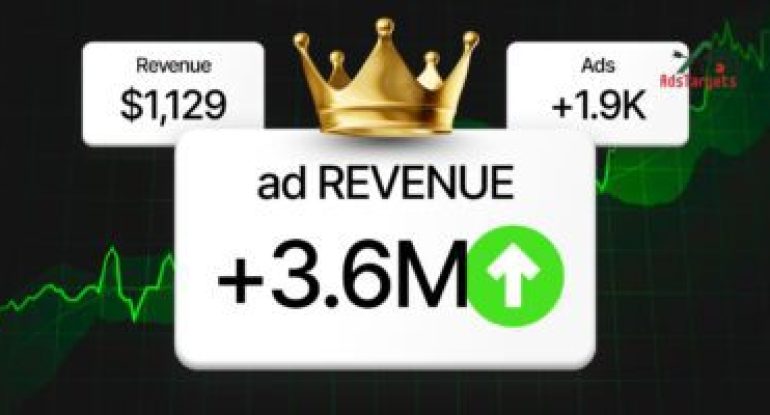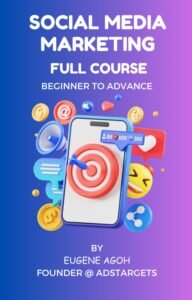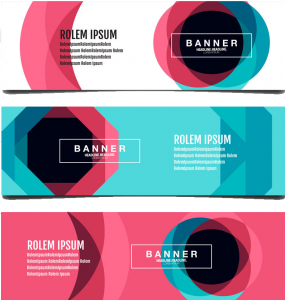Change is the only constant in the digital ad world, and 2025 isn’t pulling any punches. With AI getting smarter, video content taking center stage, and ad formats doing a little shape-shifting of their own, publishers who stay in the loop have a golden shot at maximizing ad revenue like never before.
Also, With third-party cookies on the brink of extinction, AI-driven targeting on the rise, and user privacy taking center stage, advertisers and publishers alike face a complex mix of disruption and innovation. To stay competitive and profitable, it’s no longer enough to rely on traditional monetization models or outdated ad strategies. This year demands a deeper understanding of emerging technologies, shifting consumer behaviors, and regulatory shifts.
But let’s not sugarcoat it—keeping your ad game strong can feel like spinning plates. So, what actually works? What strategies are still rock-solid, and how can you ride the wave of fresh trends without wiping out? To help you cut through the noise, we’ve rounded up 15 killer strategies for maximizing ad revenue and keeping those digital dollars rolling in.
We will also explore the key trends shaping ad revenue in 2025, uncover the major challenges facing advertisers and content creators, and highlight actionable opportunities to help you not just survive—but thrive—in a rapidly changing ecosystem.
Table of Contents
ToggleSo, What Exactly Is Ad Revenue?

In plain terms, ad revenue is the money you make when ads show up on your website, app, or social media pages. You’re basically getting paid for letting brands borrow a little space in your digital real estate — whether it’s a banner ad on your blog, a skippable video on your app, or a sponsored post sliding into your feed.
The more eyeballs you attract (and the more engaged they are), the more you stand to earn. It’s a simple concept on the surface, but once you dig into the mechanics — like ad networks, impressions, clicks, and targeting — it starts to feel like a bit of a rabbit hole. That’s where smart strategy comes in.
If you’re serious about maximizing ad revenue, it’s not just about slapping ads everywhere and hoping for the best. It’s about knowing what works for your audience, choosing the right formats, and constantly testing and tweaking. Whether you’re running a blog, a news site, an app, or even a meme page, there’s money to be made — if you play your cards right and focus on maximizing ad revenue in ways that actually deliver.
How’s Ad Revenue Actually Calculated?

Alright, let’s break it down — calculating ad revenue isn’t rocket science, but it does depend on which model you’re working with. The two big players in the game? CPM (Cost Per Mille) and CPC (Cost Per Click). These are the go-to formulas for figuring out how much you’re pocketing from your ads.
Let’s start with CPM, which is all about the views. “Mille” means a thousand in Latin, so CPM is the amount advertisers are willing to pay you for every 1,000 times their ad shows up on your site, app, or content. To do the math, you divide your total ad impressions by 1,000, then multiply by your CPM rate. Simple, right? If your CPM rate is $5 and you rack up 100,000 views, you’re looking at $500 in ad revenue. Not too shabby.
Now flip the coin — CPC is all about clicks. With this model, you get paid every time someone taps or clicks on an ad. You take the total number of clicks and multiply that by your agreed CPC rate. So if you’re earning $0.50 per click and 1,000 people click, that’s a cool $500 in your pocket. It’s more action-based, but when done right, it can be a goldmine for maximizing ad revenue.
Of course, there’s a twist — not all traffic is created equal. Advertisers tend to shell out more cash in developed countries, where audiences usually have more buying power. That’s why CPMs and CPCs in places like the U.S., UK, or Canada are generally higher than what you’d get in developing regions.
Bottom line? Whether you’re counting clicks or impressions, knowing how your ad revenue adds up is a must if you’re serious about maximizing ad revenue. Understanding these models gives you the power to test what works best for your audience and adjust your strategy like a professional.
Other Key Ad Revenue Metrics You Shouldn’t Sleep On
Sure, keeping tabs on your CPMs and CPCs is a solid starting point — they’re the bread and butter of digital ad revenue. But if you really want to get serious about maximizing ad revenue, you’ve got to dig a little deeper. There are a few other heavy-hitting metrics that can give you a fuller picture of how your ads are actually performing.
Let’s kick things off with Total Ad Revenue. This one’s pretty straightforward — it’s the grand total of all the cash you’ve earned from ads running across your site, app, or platform. Think of it as your scoreboard. Whether it’s display banners, video ads, or sponsored placements, it all adds up here.
Next up: Revenue Per Visitor (RPV). This gem tells you how much ad revenue, on average, each person who visits your site brings in. It’s a great way to measure the value of your traffic. If your RPV is climbing, it means your content and ad setup are doing their job — and doing it well.
Then there’s Revenue Per Page (RPP) — this one zooms in a bit more. It shows how much ad revenue each individual page on your site is pulling in. Why does that matter? Because it helps you spot your star performers versus the pages that need a little TLC. You might find that certain content types — like long-form guides or interactive tools — rake in more dough than short updates or image galleries.
Tracking all of these — Total Ad Revenue, RPV, and RPP — alongside your trusty CPM and CPC gives you a clearer, more holistic view of what’s working and what’s dragging. And when you’re equipped with that kind of insight, maximizing ad revenue becomes less of a guessing game and more of a strategic play.
Bottom line? The more you know, the more you grow. And in the world of digital advertising, smart tracking is half the battle won.
Top 15 Strategies to Increase Ad Revenue in 2025
Now that we’ve laid the groundwork — what ad revenue actually is and how to track it like a professional — let’s go into the real meat of it: how to boost those numbers. These 15 strategies are your go-to playbook for maximizing ad revenue in 2025 and beyond.
#1. Know Exactly Who You’re Talking To
If you’re serious about maximizing ad revenue, start by locking in on your target audience — not just vaguely, but down to the details. Throwing ads at a random crowd and hoping for clicks is a one-way ticket to underperformance. The real magic happens when your ads speak directly to the right people.
Start by dialing into the basics:
Location – Where are they? Different regions have different purchasing power and advertiser demand.
Interests – What kind of content are they here for? Tailor your ad placements to match those vibes.
Age group – This one’s big. If a chunk of your audience is underage, chances are they aren’t going to be whipping out a credit card anytime soon — and advertisers know that. Your revenue potential takes a hit if your audience isn’t in the buying bracket.
Also, don’t forget to factor in things like device usage and browsing behavior. Are they mostly mobile users? Desktop? Do they binge content or pop in quickly? These little nuggets help you refine how and where your ads show up, so they feel natural and actually get attention.
If you’re targeting the wrong crowd, even the fanciest ad strategies won’t save you. But once you start aligning your ad placements with the right audience, you’re already halfway to maximizing ad revenue with less guesswork and more impact.
# 2. Choose the Right Niche — Don’t Just Fish in Any Pond
So you’ve nailed down who you’re talking to — great! But if you really want to start maximizing ad revenue, you’ve got to make sure you’re playing in the right field. That means picking a niche that not only matches your content but also has solid earning potential.
If you’re running ads through an ad network like Google AdSense, your CPMs or CPCs are influenced heavily by supply and demand. Some industries are hotbeds of advertiser activity — meaning more competition to get in front of eyeballs, and more money flowing your way when those ads actually land.
The golden rule? Go where the money’s already moving.
High-paying niches that consistently bring in top-dollar include:
Online banking & fintech – Ads in this space often come with juicy CPCs. Everyone wants to sell you a card, account, or investment tool.
Online education – With e-learning still booming, companies are shelling out big bucks to reach curious minds.
E-commerce & retail – Especially if you’re creating shopping guides or product reviews, this niche is an ad revenue magnet.
Insurance – From health to auto, insurance keywords are notorious for their sky-high CPCs.
₿ Cryptocurrency – Still riding the wave of digital gold fever, crypto ads come with competitive bids — especially when the market is hot.
Now, that doesn’t mean you should force-fit your content into a high-paying niche just for the money — authenticity still matters. But if your content can naturally align with a sector that’s known for high advertiser demand, then you’re already giving yourself a leg up in maximizing ad revenue.
Long story short: don’t just throw content into the wind. Choose a niche that not only clicks with your audience but also brings real earning potential to the table.
# 3. Step Up Your Content Quality
This one should be a no-brainer, but you’d be surprised how many publishers skip over it like it’s just a “nice-to-have.” Truth is, high-quality content isn’t just fluff — it’s the backbone of maximizing ad revenue. You can have the perfect audience and a goldmine niche, but if your content is bland or poorly optimized, you’re leaving money on the table.
Here’s how to make sure your content is doing the heavy lifting:
✅ Nail the SEO Basics — But Make It Natural
Good SEO isn’t about stuffing your content with keywords like it’s a Christmas turkey. It’s about writing content that actually helps people — content that answers their questions, solves their problems, or gives them a reason to stick around. That means:
Smart keyword usage – Focus on relevant keywords that real people actually search for. Think high-volume, low-competition terms that give your content a fighting chance on the SERPs.
Strategic placement – Slide those keywords into your headings, meta descriptions, intros, and image alt text — but do it in a way that feels natural, not robotic.
✅ Visuals Matter, Too
If your content’s just a wall of text, people will bounce faster than a bad check. Add relevant images, charts, or infographics that match your message — and don’t forget those captions! Search engines love context, and your images should complement your copy, not clash with it.
✅ Give Away the Good Stuff (But Make ’Em Work for It)
Gated content like eBooks, whitepapers, and infographics can turn your casual readers into loyal followers or email subscribers. This kind of value-packed content also keeps people engaged longer — which advertisers love. The more time users spend on your site, the higher your chances of maximizing ad revenue through more ad impressions and clicks.
✅ Rankings Reflect Quality
At the end of the day, your search engine ranking is a report card. If your page isn’t ranking well, it’s often because the content just isn’t hitting the mark with users. Keep improving. Run audits. Test headlines. Rewrite weak sections. Better rankings = more eyeballs = maximizing ad revenue without even increasing your traffic.
#4. Mix Up Your Ad Types and Formats – Don’t Put All Your Eggs in One Basket
Let’s be real — sticking to just one type of ad is like showing up to a buffet and only eating the bread rolls. If you’re serious about maximizing ad revenue, you need to mix things up. Different formats, different types, and different placements — the whole shebang.
Here’s why this matters: most publishers these days aren’t working with just one channel. You’ve got websites, social platforms, blogs, mobile apps — maybe even newsletters. And each one plays by its own rules. So, it only makes sense to tailor your ad formats to match where they’re showing up.
✅ Explore the Full Ad Buffet
From static banner ads and eye-catching video clips to sneaky little pop-ups and scroll-friendly native ads, the options are endless. Don’t forget push notifications and interstitials (those full-screen ads that pop up between page loads). Each one brings its own strengths depending on your audience, device, and content.
For instance, got a mobile-heavy crowd? Banner ads and interstitials tend to do well on small screens. Running a content-rich blog? Native ads slide in perfectly without jarring the reader’s experience.
✅ Test, Don’t Guess
You can’t just throw spaghetti at the wall and hope it sticks. That’s where A/B testing comes in. Try different ad formats across your platforms and see what resonates. Monitor your click-through rates, bounce rates, and conversion stats like a hawk.
Let’s say you run a test comparing standard banners with short video ads. If the videos drive more engagement and revenue, then boom — you’ve got yourself a winner. This kind of fine-tuning is the bread and butter of maximizing ad revenue over time.
✅ Keep It Balanced for Better UX
The trick here isn’t just variety for variety’s sake. It’s about creating a balanced ad experience that doesn’t chase visitors away. A well-rounded mix keeps things fresh and prevents ad fatigue. Plus, it boosts the odds that users will actually pay attention to what’s being promoted.
And get this — studies show that people who search for a product after seeing a display ad are 59% more likely to buy. That’s a number you want on your side.
Moral of the story? Shake up your ad strategy. Test everything. Track what’s working. And keep your inventory diverse if maximizing ad revenue is your goal (which, let’s face it, it probably is). Ready to tackle the next strategy?
#5. Tap into the Power of Contextual Advertising – Keep It Relevant, Keep It Real
Let’s face it — people are more likely to click on an ad when it actually makes sense in the moment. That’s where contextual advertising struts onto the stage. If you’re serious about maximizing ad revenue, this strategy needs a front-row seat in your game plan.
So, what’s the deal with contextual ads? It’s pretty straightforward: instead of relying on a user’s creepy browser history, contextual advertising serves up ads based on the content of the page they’re currently eyeballing. No digital stalking — just timely, relevant ad placement that feels more helpful than invasive.
Here’s an example:
Imagine someone’s scrolling through a blog post on managing personal finances. Contextual ads might pop up promoting high-yield savings accounts, investment platforms, or even budget-tracking tools. Why? Because the content and the ad are singing the same tune. It’s targeted, but in a non-intrusive, common-sense kind of way.
And guess what? This approach works like a charm. Studies have shown that contextual ads can lead to a 25% increase in user browsing time and bump ad revenue by 15–20%. That’s the kind of lift that makes maximizing ad revenue more than just a buzzword — it becomes a real, measurable result.
Why it works so well:
It feels more natural — users aren’t weirded out by ads that seem to know too much.
It aligns with what they’re already interested in, so they’re more likely to engage.
It boosts trust — you’re offering value, not just selling stuff.
At the end of the day, contextual advertising hits that sweet spot where relevance meets subtlety. It respects the user’s space while still pushing the right products. And when done right, it’s a solid step toward maximizing ad revenue without compromising the user experience.
Want to keep that revenue curve trending up? Then let’s roll into the next winning strategy!
#6. Serve Up Dynamic Content
Static content can get boring fast. If your visitors are just sitting there scrolling without getting involved, you’re missing out on a golden opportunity. That’s where dynamic content steps in to spice things up — and yes, it plays a huge role in maximizing ad revenue.
Here’s the deal: when your content is alive — interactive, engaging, and ever-changing — it naturally keeps people sticking around longer. And the longer they hang out, the more chances your ads have to shine.
So, what exactly counts as dynamic content? Think forums where your users can share their two cents, comment sections that turn into mini-conversations, vlogs that invite feedback, quizzes that users want to take just for fun, and blog posts that actually encourage reactions and shares. That kind of content isn’t just consumed — it’s experienced.
Why this matters for your ad strategy:
Dynamic content creates a two-way street. When people engage with your content, they’re more open to what’s around it — including your ads.
It makes your site feel alive and valuable, not like an ad dumping ground.
Interactive content often means returning visitors — and return visits mean more ad views and clicks.
And here’s the kicker: the more active your users are, the more fine-tuned and personalized your ad placement becomes. That synergy between interactive content and relevant ads is a serious game-changer for maximizing ad revenue. It’s like setting the table perfectly before serving the main course.
Pro tip: Don’t just publish — invite participation. Ask questions, run polls, enable comments, or even let users contribute content. The more they feel involved, the more likely they are to trust your platform and, by extension, engage with your ads.
So if you want to turn casual visitors into loyal users — and turn those users into revenue — start weaving dynamic content into your strategy. Your ad revenue will thank you for it.
#7. Tap Into Programmatic Advertising
Manually managing ad placements is like trying to juggle flaming torches while riding a unicycle. It’s a lot. That’s why programmatic advertising is such a game-changer for publishers who are serious about maximizing ad revenue without losing sleep over it.
At its core, programmatic advertising is all about automation. It uses smart algorithms and real-time bidding to get your ads in front of the right eyes at the right moment. No more guesswork, no more wasting impressions on the wrong crowd. It’s like having a super-savvy digital agent working behind the scenes, making sure every ad dollar stretches its legs.
Now, one rising star in this space is Digital Out-of-Home (DOOH) advertising. Think big — literally. We’re talking digital billboards, smart bus stops, shopping mall screens, and even ads beaming from the sides of high-rises. This isn’t your grandma’s poster ad. DOOH is sleek, dynamic, and, best of all, immune to ad-blockers.
Here’s why you want in on this:
DOOH has a massive reach — from city streets to airport terminals, these ads get eyeballs.
They blend right into the environment, which makes them less disruptive and more memorable.
Because they’re tied to physical locations, they double as contextual advertising goldmines. Imagine someone waiting at a bus stop seeing an ad for a coffee shop right around the corner. That’s not just smart — that’s strategic.
The numbers don’t lie: In the U.S. alone, DOOH spending is on track to hit a whopping $19.08 billion this year, and by 2029, that figure could climb to $25.12 billion. That’s a whole lot of potential for publishers looking to cash in.
So, if you’re looking for a no-brainer way of maximizing ad revenue, programmatic advertising — especially DOOH — should definitely be on your radar. It’s the kind of future-focused strategy that takes the pressure off your plate while stacking up serious returns behind the scenes.
#8. Lean Into Video & Rewarded Ads — Because Eyes Love Motion

If your ad game doesn’t include video in 2025, you’re basically leaving money on the table. Video content isn’t just trending; it’s dominating. In fact, according to Wyzowl, a whopping 95% of businesses swear by video as a must-have in their marketing arsenal. Even better? 93% of them say it’s been worth every penny.
So, what does this mean for you? Simple: if you’re serious about maximizing ad revenue, it’s time to roll out the red carpet for video ads.
Now, not all video ads are created equal. Two types you’ll want in your toolkit are:
In-stream ads – These show up before, during, or after other videos (you know, the ones you’re forced to sit through before you can watch that cat fall off the couch). They’re gold when it comes to grabbing attention.
Out-stream ads – These sneak into articles and blogs as standalone video clips, often catching eyes mid-scroll. Great for mobile users, and perfect if you’re running content-heavy pages.
Both types pack a punch when it comes to premium CPMs, and together, they’re on track to make up more than 70% of all ad revenue in 2025. That’s no small slice of the pie.
But wait — there’s more.
Let’s talk rewarded ads. These are the kind of ads users want to watch — yes, really. Think of them as win-win deals: viewers get a reward (extra lives in a game, access to premium content, discounts, etc.), and you get paid. No begging, no pop-up drama, just clean, user-friendly engagement.
The kicker? Rewarded ads are expected to pump ad revenue up by 30% this year alone. That’s a serious lift for something that doesn’t annoy your audience.
Bottom line: whether it’s autoplay, interactive, in-stream, or rewarded, leaning into video is one of the smartest moves you can make for maximizing ad revenue. It brings in higher CPMs, deeper engagement, and a better shot at conversions — and honestly, in this scroll-happy, TikTok-obsessed digital world, video just hits different.
#9. Tackle Ad Blockers Head-On (Without Chasing Your Audience Away)
Ad blockers are like the bouncers at the club door, and your ads? They’re stuck outside in the cold. According to Statista, over 763 million internet users are rocking some form of ad blocker. That’s a lot of eyeballs you’re missing out on — and a serious thorn in the side of anyone focused on maximizing ad revenue.
So how do you work around them without scaring off your visitors?
Well, your first instinct might be to slap a pop-up asking users to disable their ad blockers. But let’s not kid ourselves — that’s a risky play. Most users will bounce faster than you can say “please whitelist us,” no matter how great your content is. Worse, a high bounce rate can start dragging down your SEO ranking, and now you’ve got two problems instead of one.
A smarter route? Go native.
Native ads are the chameleons of the ad world — they blend right into your content, matching the look, feel, and tone of your site. They’re not flashy or disruptive. Instead, they quietly serve up value while keeping the experience smooth for your users.
Say your site is all about B2B marketing trends. A native ad promoting digital tools for B2B companies fits right in. It’s relevant, it’s helpful, and best of all, it doesn’t scream “I’m an ad!” That kind of subtle integration not only slips past ad blockers but actually adds to the user experience. That’s a win in any marketer’s book.
So if you’re serious about maximizing ad revenue without annoying your audience or tanking your rankings, native ads should be front and center in your strategy. Think of them as your secret weapon for keeping the money flowing — even in an ad-blocked world.
#10. Don’t Drown Your Audience in Ads — Less Is Often More

Nobody likes a cluttered mess. You could have the most polished, well-targeted ads in the game, but if they’re elbowing each other for space like it’s rush hour on a subway, your audience is going to bounce faster than a bad check. And just like that, your dream of maximizing ad revenue takes a hit.
Think about it: a page crammed with ads doesn’t just scream “spammy,” it ruins the user experience. Instead of exploring more of your content, your visitors might make a quick U-turn and head for the exit. And if that wasn’t enough of a buzzkill, too many ads can set off alarms with Google’s Webmaster Guidelines — and that’s the kind of attention you don’t want.
The fix? Strike a balance.
You’ve got to find that sweet spot where your ads make an impact without hogging the spotlight. The magic number of ads per page isn’t carved in stone — it depends on the format, size, and especially the length of the content. Video ads, for instance, need a bit more breathing room. If you’re stuffing three video ads into a 90-second clip, you’re not optimizing — you’re overwhelming.
Also, think about the kind of content your ads are cozying up to. A long-form guide might handle more ad placements than a short blog post. And remember: subtle, well-placed ads can often do more heavy lifting than a whole army of flashy pop-ups.
Want to keep things in check? Google Analytics is your best friend here. Use it to monitor engagement, bounce rates, and overall site performance. If you see a dip in page views or time on site, it might be time to trim the fat.
At the end of the day, maximizing ad revenue isn’t about throwing more ads at the wall to see what sticks — it’s about being smart with your placements. Respect your audience’s attention span, keep your layout clean, and let your ads complement your content, not compete with it.
#11. Size Matters — But So Does Experience
When it comes to ads, bigger isn’t always better. Sure, oversized banners might look like they’re doing the heavy lifting, but if they’re swallowing your content whole, they’re probably doing more harm than good — especially if your goal is maximizing ad revenue in the long run.
Nobody comes to a site hoping to dodge pop-ups like they’re playing Whac-A-Mole. People are there for the content — and if they have to scroll through a jungle of massive ads to get to it, they’ll likely peace out before they ever convert. That’s not just bad for engagement, it’s a one-way ticket to plummeting revenue.
This is especially true for mobile users, who now make up over 60% of organic Google searches in the U.S. On those smaller screens, clunky ads eat up space like it’s an all-you-can-eat buffet, leaving your actual content gasping for air. So if you’re serious about maximizing ad revenue, you’ve got to serve up ads that don’t bully the user experience.
Here’s the trick: smart sizing.
For horizontal placements, the 300×250 pixel medium rectangle is a go-to choice — it’s versatile, not too flashy, and gets the job done. If you’re leaning into square ad spaces, 250×250 and 200×200 pixels are sleek enough to work across both desktops and mobile without turning the layout into a war zone.
And for vertical slots, especially on mobile? Google Ads has you covered. Recommended sizes like 300×200, 300×100, 300×50, and yes, the reliable 250×250 and 200×200, give you plenty of flexibility to blend ads naturally into your design without interrupting the flow.
Bottom line? Get strategic with your ad sizes. Test what works, track the results, and prioritize layouts that respect the user journey. If your ads complement your content instead of steamrolling it, your audience sticks around longer — and that’s where the real magic happens when it comes to maximizing ad revenue.
#12. Flex Your Pricing Muscle to Stay Ahead of the Game
Let’s be real — ad pricing isn’t a one-size-fits-all deal. Just like flight tickets or hotel rooms, ad rates tend to spike during high-traffic times like Christmas, Black Friday, and Valentine’s Day. Once those frenzied shopping seasons pass, though? Demand drops, and your once-sky-high ad revenue can come crashing down to earth.
That kind of seasonal seesaw makes it tough to keep things steady, especially if ads are your bread and butter. But here’s the good news: you don’t have to just ride the wave and hope for the best. You can take charge by applying flexible pricing strategies backed by yield optimization — aka, the secret sauce to smoothing out those revenue bumps.
What’s yield optimization? It’s all about letting the data do the driving. You analyze which ads are pulling their weight, double down on the ones that are raking in results, and tweak or retire the underperformers. That way, even when the market cools off, you’re still maximizing ad revenue by squeezing every bit of value out of your ad inventory.
Think of it like playing chess, not checkers. You’re always two moves ahead — adjusting rates when demand’s high, staying competitive when it dips, and making sure you’re never leaving money on the table. Over time, this approach not only smooths out the feast-or-famine cycle but also helps with maximizing ad revenue in the long run, all without compromising the user experience or annoying your loyal audience.
Bottom line? Smart pricing isn’t about guessing — it’s about planning, pivoting, and letting strategy do the heavy lifting.
#13. Nail Your Ad Placement or Leave Money on the Table
You could be running the most eye-catching, high-paying ads in the business — but if they’re tucked away like a secret stash, don’t be surprised when the clicks (and cash) just don’t come rolling in. One of the sneakiest reasons your income might be lagging is poor ad placement. And yep, it’s a bigger deal than most folks realize.
If you’re serious about maximizing ad revenue, you need to stop treating ad placement like an afterthought and start treating it like prime real estate. Ads buried at the bottom of a page or shoved into awkward corners? Forget about it — they’re basically invisible. Instead, aim for high-impact zones like right below your navigation bar, smack dab in the middle of your content, or nestled into clean white space where they actually stand out without being annoying.
These spots aren’t just more clickable — they feel natural to your users, too. And when an ad looks like it belongs, people are way more likely to engage. It’s all about striking that perfect balance between visibility and vibe.
Want to go the extra mile? Test a few placements out. Use heatmaps and scroll tracking tools to figure out where eyeballs are landing — and more importantly, where they aren’t. Small tweaks in positioning can make a huge difference when it comes to maximizing ad revenue, so don’t be afraid to move things around and see what performs best.
Bottom line: ad placement isn’t guesswork. It’s strategy. Place your ads like you mean it — front and center, easy to click, and always in tune with your content flow.
#14. Don’t Let Slow Load Times Kill Your Cash Flow
In the digital world, speed isn’t just nice to have, it’s non-negotiable. If your site takes forever to load, you’re basically giving your visitors a reason to bounce before they even see your content, let alone your ads. And when people start bailing, your ad impressions tank, click-throughs nosedive, and you can kiss maximizing ad revenue goodbye.
HubSpot hits the nail on the head: an eCommerce site that loads in one second can convert 2.5x more visitors than one that drags its feet and loads in five. That’s a massive difference — and it’s all down to speed.
One of the smartest fixes in the playbook? Lazy loading. No, it’s not what it sounds like. Lazy loading is a slick little strategy that only loads your ads when someone actually scrolls down to the part of the page where those ads live. So, if a visitor never makes it to the bottom of the page, your server doesn’t waste precious time and energy loading ads no one will see. It’s clean, efficient, and super smart.
Here’s the kicker: lazy loading doesn’t just improve user experience by speeding up your site — it also boosts viewability scores and ensures that advertisers are only paying for ads that genuinely get seen. That means everyone wins. Your users get faster, smoother browsing. Your advertisers get better value. And you? You get one step closer to maximizing ad revenue like a pro.
Bottom line: don’t let slow site speeds suck the life (and profits) out of your pages. Slim down your load times, put lazy loading to work, and keep both users and advertisers coming back for more.
#15. Keep Tabs on Your Ads -Always
Look, you can put all the best strategies in place — from killer ad formats to slick placements — but if you’re not keeping an eye on what’s working (and what’s flopping), you’re basically flying blind. When it comes to maximizing ad revenue, tracking ad performance isn’t just important — it’s the bread and butter of the whole operation.
Sometimes, boosting results might be as simple as shuffling the order of your ads. Other times, it might mean pulling a full 180 — swapping out underperforming ads, testing different formats, tweaking placements, or even jumping ship to a better-paying ad network. If your gut says something’s off, chances are your metrics will back you up.
And don’t forget about your ad inventory. If you’re only running a handful of ads per session, you could be leaving money on the table. On the flip side, if you’re overcrowding your content with too many, you might be turning people away. It’s a balancing act — one that gets easier when you’re paying attention to the data.
The key to maximizing ad revenue is staying agile. Watch your click-through rates, keep tabs on viewability scores, dig into session-based revenue, and don’t be afraid to pivot when the numbers tell you to. Use tools like Google Ad Manager or AdSense reports to get the lowdown on what’s firing and what’s fizzling.
Bottom line? The market shifts, user behavior changes, and what crushed it last month might flop this time around. So stay sharp, tweak often, and keep your finger firmly on the pulse. The advertisers paying top dollar are counting on it — and your revenue stream depends on it.
Conclusion
To ride out the rough patches and catch the tailwinds of the ever-shifting digital ad space, publishers need to lock down the fundamentals. That means knowing your audience like the back of your hand, staying laser-focused on your niche, and making sure your SEO game is tight — especially when it comes to ad visibility.
But let’s be real — the basics alone won’t cut it anymore. Maximizing ad revenue in today’s world calls for a smarter, more holistic approach. Mixing up your ad formats to keep things fresh, leaning into contextual ads, having a backup plan for pesky ad blockers, and not going overboard with placements all help create a smoother, more user-friendly experience.
At the end of the day, it’s all about staying flexible, keeping tabs on performance, and adjusting your sails when the winds change. If you’re constantly tuning and tweaking your setup with the right tools and data, you’re not just maximizing ad revenue now — you’re setting yourself up to cash in on the next wave of digital opportunities.
Stay sharp, stay strategic, and your ad dollars will keep stacking.








